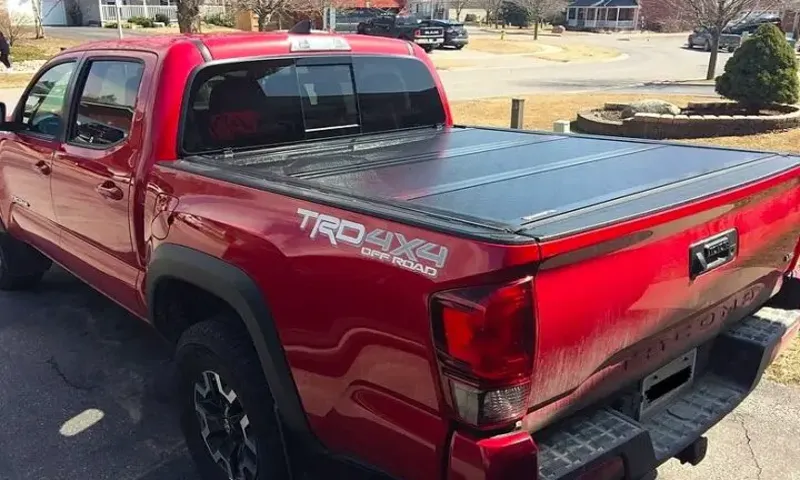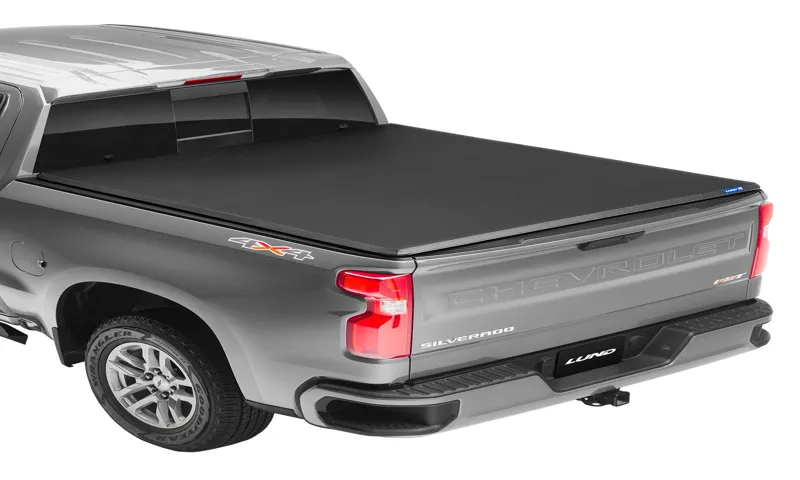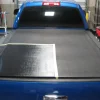Are you tired of your tonneau cover leaking and ruining the contents of your truck bed? Don’t worry, you’re not alone. Many truck owners face this frustrating issue, but luckily, there are solutions. In this blog, we’ll discuss effective ways to stop your tonneau cover from leaking, so you can have a dry and secure storage space for all your belongings.
Imagine you’re caught in a sudden downpour while driving, and when you finally reach your destination, you find water has seeped through your tonneau cover, drenching everything in the truck bed. This scenario can be quite infuriating, especially if you carry important equipment, expensive tools, or even groceries in your truck. But fret not, because with the right precautions, you can avoid this predicament altogether.
There are several factors that can contribute to a tonneau cover leaking. It could be due to poor installation, manufacturer defects, worn-out seals, or even the design of the cover itself. It’s important to identify the root cause to effectively tackle the problem.
Once you know what’s causing the leakage, you can take appropriate measures to fix it. One of the most common reasons for a tonneau cover leakage is improper installation. If the cover is not installed correctly, it may leave gaps or create weak spots where water can seep through.
Therefore, it’s crucial to follow the manufacturer’s instructions carefully or seek assistance from a professional to ensure a proper fit. Another common culprit is worn-out seals. Over time, the rubber seals on your tonneau cover can become brittle, cracked, or damaged, compromising their ability to prevent water from entering the truck bed.
If you notice any signs of wear and tear on the seals, it’s important to replace them promptly. This simple task can make a significant difference in keeping your truck bed dry. Additionally, the design of your tonneau cover can also play a role in its effectiveness against leaks.
Table of Contents
Understanding the Problem
If you’re struggling with a leaking tonneau cover, you’re not alone. Many truck owners face this frustrating issue. However, there are a few steps you can take to stop your tonneau cover from leaking and keep your truck bed dry.
First, make sure the cover is properly installed. Check for any gaps or loose bolts that could be causing the leaks. Next, consider adding weather stripping along the edges of the cover to create a tight seal.
This will help prevent water from seeping in. Additionally, you might want to invest in a tonneau cover with built-in drainage systems, such as drain tubes or channels, which can effectively redirect water away from the truck bed. Finally, it’s crucial to keep your tonneau cover clean and free of debris that could cause blockages and lead to leaks.
By following these tips, you should be able to enjoy a dry and protected truck bed, even in wet weather conditions.
Identifying the Cause of the Leaks
leaks, identifying the cause, understanding the problem Have you ever experienced a leak in your home and wondered where it was coming from? Leaks can be frustrating and disruptive, but understanding the cause of the problem is the first step in finding a solution. Leaks can occur for a variety of reasons, and it’s important to identify the source before attempting any repairs. One common cause of leaks is old or damaged pipes.
Over time, pipes can corrode or develop cracks, leading to water seepage. Another possible cause is a faulty seal around faucets or fixtures. If the seal is worn out or damaged, water can escape and create a leak.
Additionally, leaks can be caused by high water pressure or clogged drains, which can put excessive strain on the pipes and cause them to leak. By understanding the problem and identifying the cause of the leaks, you can take the necessary steps to fix the issue and prevent further damage to your home.

Common Tonneau Cover Leaks
Common Tonneau Cover Leaks Tonneau covers are a great addition to any pickup truck as they provide protection and security for your cargo. However, one common issue that truck owners face is tonneau cover leaks. Understanding the problem is crucial in order to find a solution.
One of the most common culprits for tonneau cover leaks is loose or damaged seals. The seals around the edges of the cover are designed to create a watertight seal, but over time they can become worn or loose. This can allow water to seep in, leading to leaks.
To fix this issue, you may need to replace the seals or adjust them to create a tighter seal. Another cause of tonneau cover leaks can be gaps or cracks in the cover itself. If the cover has been damaged or is not properly aligned, water can find its way through these openings.
In some cases, simply realigning or tightening the cover can solve the problem. However, if there are significant gaps or cracks, you may need to repair or replace the cover altogether. It’s also important to note that weather conditions can play a role in tonneau cover leaks.
Heavy rain or snow can put additional stress on the cover and its seals, making it more likely for leaks to occur. Investing in a high-quality, weather-resistant tonneau cover can help minimize the risk of leaks in these conditions. In conclusion, understanding the common causes of tonneau cover leaks is the first step in finding a solution.
Loose or damaged seals, gaps or cracks in the cover, and severe weather conditions can all contribute to leaks. By addressing these issues, you can ensure that your tonneau cover provides the protection you need for your truck cargo.
Preventive Measures
Are you tired of dealing with a leaking tonneau cover on your truck? Well, you’re in luck because I have some preventive measures that can help you stop the leaks once and for all. One of the first things you can do is regularly inspect your tonneau cover for any signs of damage or wear. Sometimes, a small tear or crack may develop over time, allowing water to seep in.
By catching these issues early on, you can take the necessary steps to fix them before they lead to a bigger problem. Additionally, applying a sealant or waterproofing spray to your tonneau cover can provide an extra layer of protection against leaks. These products create a barrier that prevents water from seeping through the fabric or seams.
Finally, make sure the tonneau cover is properly installed and secured. Loose or improperly fitted covers can easily allow water to enter the truck bed. Taking the time to tighten any loose bolts or straps can make a significant difference.
By following these preventive measures, you can enjoy a dry and leak-free tonneau cover all year round.
Choosing a High-Quality Tonneau Cover
Preventing damage to your truck bed and maintaining its pristine condition is essential, and one way to accomplish this is by investing in a high-quality tonneau cover. These covers not only provide protection against the elements but also help keep your belongings secure. To ensure you choose the best tonneau cover, there are a few preventive measures you should consider.
First, consider the material of the cover. Opt for durable materials such as aluminum or vinyl, which are resistant to wear and tear. Additionally, look for covers with weather seals or gaskets to prevent water from seeping into your truck bed.
Another preventive measure is to choose a tonneau cover that comes with a secure locking mechanism, such as a tailgate lock or a clamp system. This will keep your belongings safe from theft. Finally, make sure to regularly clean and maintain your tonneau cover to prevent any buildup of dirt or debris that could potentially damage the cover or your truck bed.
By taking these preventive measures, you can ensure that your tonneau cover will last for years to come, providing maximum protection for your truck bed.
Proper Installation
Preventive Measures for Proper Installation of Appliances When it comes to installing appliances, taking preventive measures is crucial to ensure their proper functioning and longevity. One of the first things you should do is read the installation manual thoroughly. It may seem like a hassle, but it contains important instructions specific to your appliance that will help you avoid costly mistakes.
Additionally, it is important to make sure you have all the necessary tools and equipment before starting the installation process. This will prevent delays and reduce the chance of errors. Another preventive measure is to check the electrical and plumbing connections before installing the appliance.
Ensuring that the electrical outlets and plumbing lines are in good condition will prevent any malfunctions or leaks once the appliance is installed. Lastly, it is recommended to have a professional inspect the installation if you are unsure about any step or if it involves complex connections. This will give you peace of mind knowing that the appliance is properly installed and will work safely and efficiently.
By taking these preventive measures, you can avoid potential problems and enjoy the full benefits of your newly installed appliance.
Regular Maintenance and Cleaning
Regular maintenance and cleaning are essential when it comes to keeping your belongings in tip-top shape. Whether it’s your car, your home, or even your electronic devices, preventive measures can go a long way in prolonging their lifespan. By regularly cleaning and maintaining your items, you can prevent dirt, dust, and grime from building up and causing potential issues.
Just like how we brush our teeth to prevent cavities or change the oil in our cars to keep the engine running smoothly, taking care of our belongings through regular maintenance is crucial. So, why not set aside some time each month to give your items a little TLC? Trust me, they’ll thank you for it in the long run.
Using Sealants
sealants, preventive measures
Addressing Existing Leaks
Do you find water leaking into your truck bed after a heavy rain? If you have a tonneau cover on your truck, this can be a frustrating problem to deal with. However, there are several ways you can address existing leaks and prevent future ones. One effective method is to use a specialized sealant or adhesive to seal any gaps or cracks in the cover.
Another option is to install a seal or gasket between the tonneau cover and the truck bed to create a watertight seal. Additionally, regularly inspecting and cleaning the cover can help to maintain its effectiveness and reduce the likelihood of leaks. By taking these proactive steps, you can ensure that your tonneau cover provides the protection and security you need for your truck bed.
Inspecting the Tonneau Cover for Damage
One of the essential steps in maintaining your truck’s tonneau cover is regularly inspecting it for any damage. Even the smallest tears or cracks can lead to leaks, allowing water to seep into the truck bed and potentially damage your cargo. To address existing leaks, start by thoroughly examining the cover for any visible signs of damage such as holes, punctures, or worn-out sections.
If you notice any areas that need attention, don’t worry! Fixing these issues is usually straightforward and can be done by using repair kits that are specifically designed for tonneau covers. These kits typically contain adhesive patches or tape that can be applied to seal the damaged areas and prevent further leaks. By addressing the existing leaks promptly, you can ensure that your tonneau cover remains in top condition and provides optimal protection for your truck bed.
Repairing Small Rips or Tears
repairing small rips or tears, address existing leaks, fixing a torn item, patching up a hole, repairing a ripped fabric, preventing further damage to torn materials Have you ever had a favorite t-shirt or pair of jeans that you loved, but then noticed a small tear or rip in it? It can be frustrating to see our beloved clothes become damaged, but luckily, there are ways to address existing leaks and repair those small rips or tears. When it comes to fixing a torn item, one of the first things you’ll want to do is assess the damage. Is the tear small and manageable, or is it larger and in need of a more extensive repair? Once you have an idea of the size and severity of the tear, you can then move on to figuring out the best way to patch it up.
For smaller rips or tears in fabrics, a simple sewing technique can often do the trick. Grab a needle and thread that matches the color of the fabric and use small, tight stitches to secure the torn edges together. Make sure to create a strong, even seam that will hold up to wear and washing.
If the tear is in a highly visible area, you may also want to consider reinforcing the repair with a small iron-on patch on the inside of the fabric. If the tear is in a more delicate or difficult-to-reach area, such as a thin blouse or a seam, you may need to get a bit more creative with your repair. One option is to use a fabric adhesive or glue specifically designed for repairing fabrics.
Apply a small amount to the torn edges and press them together firmly. Be careful not to use too much adhesive, as it can seep through the fabric and create a visible stain. Another option for repairing a ripped fabric is to use an iron-on patch.
These patches come in a variety of colors and can be easily applied with the heat of an iron. Simply cut the patch to fit the size of the tear, place it over the damaged area, and press down firmly with the iron. The heat will activate the adhesive on the patch and bond it to the fabric, creating a seamless repair.
No matter which method you choose, it’s important to address existing leaks as soon as possible. This will prevent further damage to the torn materials and keep your favorite clothes in good condition for longer. So next time you notice a small rip or tear in your clothing, don’t fret.
Replacing Damaged Seals or Gaskets
If you notice that your car is leaking fluids, it’s important to address the issue as soon as possible. One common cause of leaks is damaged seals or gaskets. These seals and gaskets are responsible for keeping fluids contained within their respective systems.
Over time, they can become worn out or damaged, leading to leaks. Fortunately, replacing damaged seals or gaskets is a relatively straightforward process. It’s always a good idea to consult your vehicle’s manual for specific instructions, but in general, you’ll need to locate the damaged seal or gasket, remove any components that are in the way, and replace the old seal or gasket with a new one.
This will help prevent further leaks and ensure that your car is running smoothly.
Other Tips and Tricks
If you’re tired of dealing with a tonneau cover that leaks and lets water into your truck bed, there are a few tips and tricks you can try to keep everything dry and protected. First, make sure the cover is properly installed and tight. A loose or ill-fitting cover is more likely to let water in.
Additionally, you can use weatherstripping or adhesive tape to seal any gaps or seams where water might seep through. Another option is to use a tonneau cover seal, which is specifically designed to create a watertight barrier. You can also try using a tonneau cover cleaner and conditioner to maintain the waterproofing properties of your cover.
Finally, if all else fails, you might consider investing in a high-quality, waterproof tonneau cover that is specifically designed to keep water out.
Avoiding Pressure Build-up
pressure build-up, avoiding pressure build-up, tips and tricks, prevent, relief valve, regular maintenance, inspection, safety measures, pressure relief devices, pressure monitoring system, reactive maintenance, proactive maintenance, safety protocols. In addition to installing a relief valve and regularly maintaining and inspecting it, there are some other tips and tricks you can employ to avoid pressure build-up in your systems. One important safety measure is to invest in a pressure monitoring system.
This system will allow you to constantly keep an eye on the pressure levels in your system and detect any abnormal rises before they become a problem. Another important tip is to implement proactive maintenance strategies instead of relying solely on reactive maintenance. By regularly inspecting and maintaining your system, you can identify and address any issues before they lead to pressure build-up.
Additionally, following proper safety protocols and procedures is crucial. Make sure all operators are properly trained and aware of the hazards associated with pressure build-up. By taking these extra precautions, you can help prevent dangerous pressure build-up and ensure the safety of your systems and personnel.
Keeping the Bed Dry
In addition to using waterproof sheets and mattress protectors, there are other tips and tricks to help keep your bed dry. One helpful trick is to elevate the head of the bed slightly. By propping up the top half of the mattress, any liquid that spills or leaks onto the bed is more likely to run off instead of pooling and causing a mess.
Another tip is to use absorbent pads or mattress toppers. These are designed to soak up any liquid and keep it away from the mattress itself. They can be easily washed and dried, making them a convenient solution for keeping your bed dry.
Additionally, it’s important to regularly check for any leaks in the mattress or sheets. If you notice any holes or tears, patch them up immediately to prevent further damage. By implementing these tips and tricks, you can ensure that your bed stays dry and comfortable night after night.
Protecting the Tonneau Cover From Extreme Weather
In addition to the previously mentioned tips for protecting your tonneau cover from extreme weather, there are a few other tricks you can employ to ensure its longevity. One such trick is to regularly clean and condition the cover. Dirt, debris, and exposure to the elements can cause the cover to fade, crack, and deteriorate over time.
By cleaning it with a mild soap and warm water, you can remove any built-up grime and keep it looking fresh. After cleaning, be sure to apply a quality vinyl or leather conditioner to help maintain its flexibility and strength. Another tip is to avoid exposing the cover to harsh chemicals or cleaners, as these can cause irreversible damage.
Additionally, properly securing the cover when not in use is essential. This can prevent wind from getting underneath and potentially ripping or damaging the cover. By taking these extra precautions, you can prolong the life of your tonneau cover and ensure it continues to protect your cargo effectively.
Conclusion
In conclusion, stopping a tonneau cover from leaking is not just about finding a temporary fix, it’s about embracing a waterproofing lifestyle. Think of your tonneau cover as a partner in crime – keeping your precious cargo safe from the elements. And just like any relationship, it takes effort to make it work.
So, put on your detective hat, channel your inner Sherlock Holmes, and investigate every nook and cranny of your truck bed for potential leaks. From weatherstripping to sealant, find the right tools to seal the deal. And remember, a little TLC (Tonneau Leak Control) goes a long way.
So, don’t let those pesky raindrops ruin your day, take charge and become the master of your tonneau cover’s destiny. With a little wit and cleverness, you’ll be conquering the raindrops like a true waterproofing warrior. Now go forth, impervious adventurer, and keep those leaks at bay!”
FAQs
How can I prevent water from leaking into my tonneau cover?
To prevent water from leaking into your tonneau cover, you can start by ensuring that the cover is properly installed and adjusted. Additionally, using a tonneau cover sealant or weather stripping can help create a watertight barrier. Regularly inspecting and maintaining the cover, including checking for any tears or holes, can also help prevent leaks.
Are there any specific tonneau cover brands that are known for being leak-proof?
While there are several tonneau cover brands that offer weather-resistant features, it’s important to note that no cover is completely leak-proof. However, some popular tonneau cover brands known for their excellent water resistance include TruXedo, BAK Industries, and Extang.
Is there a DIY solution to fix a leaking tonneau cover?
Yes, there are a few DIY solutions you can try to fix a leaking tonneau cover. One option is to apply a waterproof sealant along the edges and seams of the cover. Another option is to use adhesive-backed foam weather stripping to create a more watertight seal. However, it’s always recommended to consult the manufacturer’s instructions or contact their customer support before attempting any DIY repairs.
Can extreme weather conditions affect the water resistance of a tonneau cover?
Yes, extreme weather conditions can affect the water resistance of a tonneau cover. Heavy rain, snow, or high winds can potentially cause leaks or reduce the effectiveness of the cover’s sealing mechanisms. It’s important to choose a tonneau cover that is specifically designed to withstand the weather conditions in your area and to regularly inspect and maintain the cover for optimal performance.
Are there any additional accessories or modifications that can help prevent water leakage?
Yes, there are several accessories and modifications available to enhance the water resistance of a tonneau cover. Some common options include using a tailgate seal kit to create a better seal between the cover and the truck bed, installing drainage tubes to direct water away from the cover, or adding a tonneau cover support system to prevent sagging and pooling of water.
Can a tonneau cover still leak even if it’s properly installed?
Yes, even if a tonneau cover is properly installed, there is still a possibility of leaks. Factors such as wear and tear, aging of materials, or damage to the cover can all contribute to water leakage. Regular maintenance, inspections, and repairs can help minimize the risk of leaks.
Can I use a tonneau cover if I frequently transport items that are sensitive to water?
If you frequently transport items that are sensitive to water, it’s important to choose a tonneau cover that is specifically designed for maximum water resistance. Look for covers that offer features such as reinforced seams, built-in draining systems, or high-quality materials that are known for their water-resistant properties. Additionally, using additional waterproof storage bags or containers can provide an extra layer of protection for your cargo.



